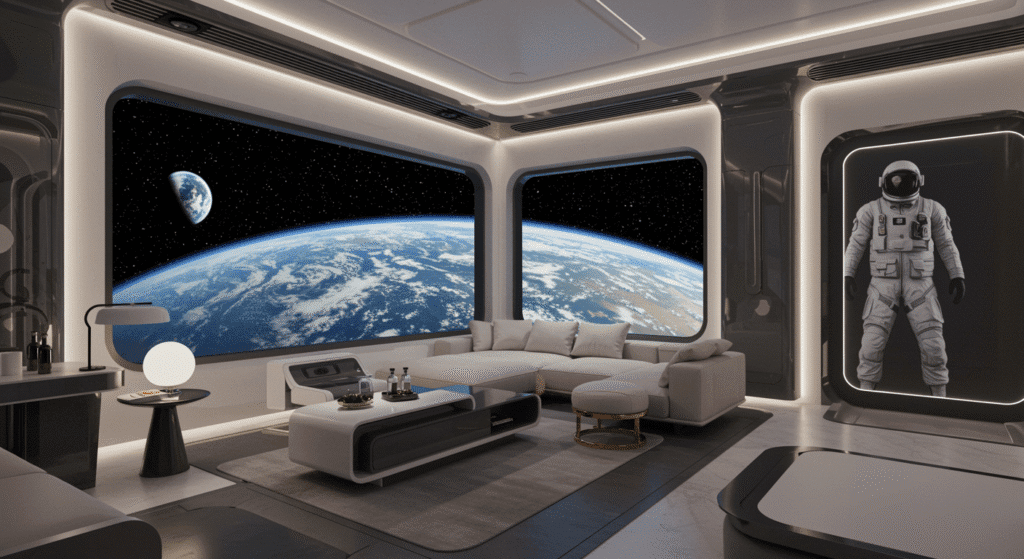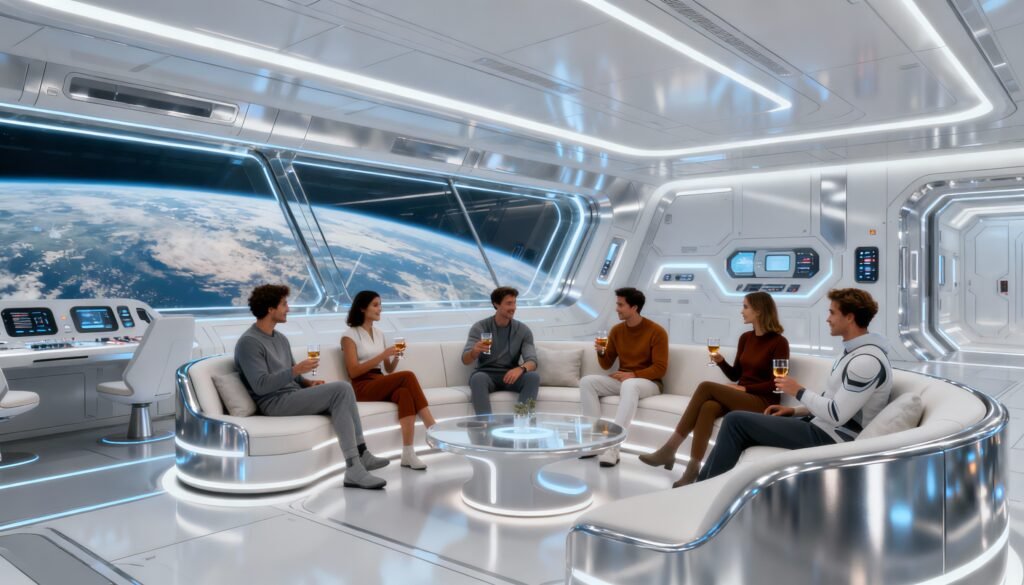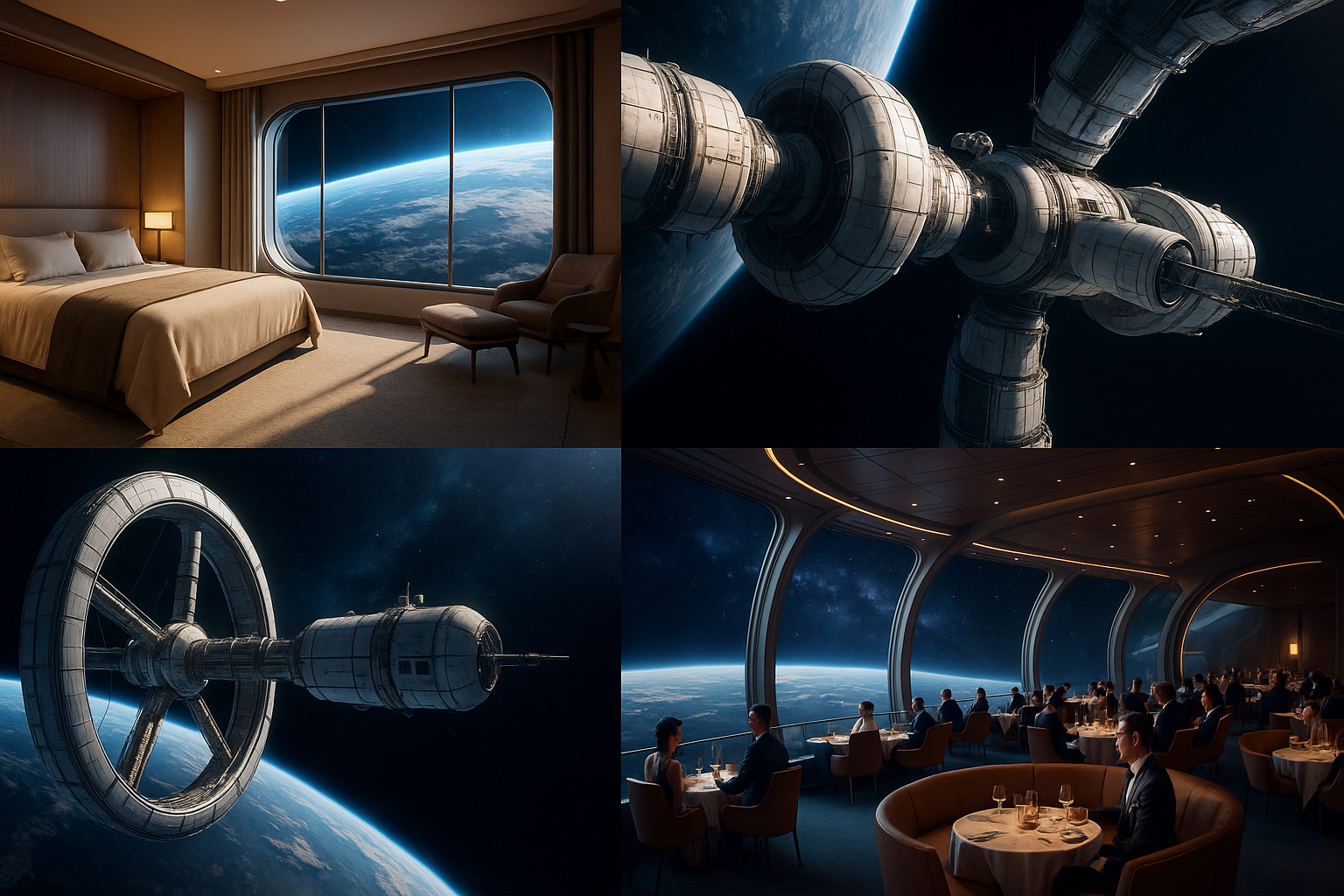For centuries, humanity has gazed at the night sky with awe and curiosity. What began as a quest to understand the stars has now evolved into a bold dream — to live among them. One company, Orbital Assembly Corporation (OAC), is turning that dream into a tangible reality by proposing something once confined to the pages of science fiction: luxury hotels in space.
Imagine sipping coffee while watching the Earth rise below you, exercising in a zero-gravity gym, or spending a romantic evening with your partner as the stars drift endlessly outside your window. This is the vision behind Voyager Station and Pioneer Station, the two pioneering orbital resorts that promise to redefine what it means to go on vacation.
The Birth of the Space Hotel Concept
The idea of a space hotel isn’t entirely new — but Orbital Assembly is the first company to seriously pursue it at scale. Founded by a team of engineers and aerospace professionals, the company aims to bridge space technology and human comfort, creating orbital habitats that are not just livable, but luxurious.
OAC envisions two distinct stations:
- Voyager Station, a larger, wheel-shaped orbital habitat capable of hosting over 400 guests.
- Pioneer Station, a smaller and more modular version, designed for around 28 people — perfect for research, private missions, and early tourism ventures.
Construction is planned to begin in 2025, and the company expects to welcome its first guests by 2027. If successful, this will mark a major milestone in the commercialization of space.
The Science Behind a Rotating Hotel
The most striking feature of these space hotels is their wheel-like design. This isn’t just for visual appeal — it’s a critical engineering decision. The rotating structure uses centrifugal force to simulate gravity. As the wheel spins, objects and people inside are pushed outward, mimicking the sensation of weight.
This artificial gravity solves one of the biggest challenges of long-term space living: microgravity’s effect on the human body. Without gravity, astronauts lose muscle mass and bone density. A rotating habitat could offer partial gravity levels, allowing guests to walk, sleep, and dine more comfortably than in a traditional spacecraft.
In essence, it combines the futuristic beauty of a sci-fi starship with the physics of a rotating Ferris wheel in orbit.
Inside the Space Hotel: Luxury Among the Stars
Orbital Assembly wants to make the experience not just survivable — but desirable. Inside the stations, guests can expect amenities comparable to a five-star resort:
- Private suites and guest pods, offering panoramic views of Earth.
- Cinemas, where you can watch movies while orbiting 500 kilometers above the planet.
- Restaurants and bars, serving fine dining with a view of the stars.
- Gyms and fitness zones, adapted for partial gravity workouts.
- Lounges and recreation decks, designed to float freely or relax under simulated gravity.
In addition, there will be research modules, crew quarters, and safety hubs ensuring 24/7 monitoring by trained personnel. Every module is designed with a blend of aerospace engineering precision and hospitality design aesthetics — think futuristic minimalism meets luxury spa.

How Much Will a Stay Cost?
Here’s where reality hits: at least for now, a night at the Voyager Station isn’t for everyone. Initial estimates suggest the cost could reach $1.2 billion per stay, though this number reflects early prototypes, transport logistics, and orbital construction expenses.
However, experts predict that costs will dramatically decrease as commercial spaceflight matures. Much like air travel — which once was only for the wealthy — space tourism will eventually democratize.
As reusable rockets, cheaper materials, and international partnerships evolve, a night in orbit may one day cost as much as a luxury cruise.
Why This Project Matters
While it’s easy to dismiss space hotels as billionaire fantasies, there’s a deeper purpose behind them. These orbital resorts could serve as testing grounds for future space habitats — including lunar bases and Mars colonies.
Key benefits include:
- Testing artificial gravity for long-term missions
- Studying how humans adapt to semi-gravity environments
- Providing infrastructure for future orbital research labs
- Inspiring a new generation of aerospace innovators
In short, Orbital Assembly’s dream could lay the groundwork for human settlement beyond Earth. What begins as tourism may evolve into off-world living.
The Engineering and Logistical Challenges
Building a rotating habitat in orbit is no small feat. Each component — from the docking ports to the rotating spokes — must be assembled in microgravity, piece by piece.
Some of the core challenges include:
- Orbital assembly precision: The wheel’s rotation must remain perfectly balanced.
- Launch logistics: Materials must be lightweight yet strong enough to endure space radiation and temperature swings.
- Life support systems: Air recycling, water recovery, and food supply must be self-sustaining.
- Safety protocols: Redundant shielding against debris, radiation, and power loss is vital.
OAC is exploring robotic construction and automated docking systems, combining AI-driven assembly with human oversight.
From Sci-Fi to Reality
For decades, science fiction authors have imagined spinning space stations — from 2001: A Space Odyssey to Elysium. Now, those visions are guiding real-world design.
The Voyager Station is expected to orbit Earth at an altitude similar to the International Space Station (ISS) — about 400 to 500 kilometers up. The difference? The ISS is purely scientific; Voyager Station is both scientific and recreational.
If this succeeds, it will mark a turning point — not just in tourism, but in how we perceive space itself. It will no longer be just a frontier to explore, but a destination to experience.

The Future of Space Tourism
Space tourism is already taking off. Companies like SpaceX, Blue Origin, and Virgin Galactic have made suborbital flights a reality. Orbital Assembly’s project takes the next leap: sustained living in orbit.
As competition grows, future innovations could include:
- Space cruises between multiple orbital destinations.
- Low-gravity sports and entertainment zones.
- Art exhibits and concerts held in orbit.
- Collaborations with universities and research labs for joint missions.
In the long run, these ventures could even fuel space-based manufacturing — using zero-gravity to create materials impossible to produce on Earth.
Final Thoughts
The idea of checking into a space hotel may seem like fantasy — but so did flying, once upon a time. Orbital Assembly’s Voyager and Pioneer Stations embody humanity’s unstoppable curiosity and our desire to turn the impossible into the inevitable.
By 2027, we might witness the dawn of a new era — where vacationing in orbit is not a dream, but a booked itinerary.
In the end, the question isn’t whether we’ll live among the stars — it’s when.











